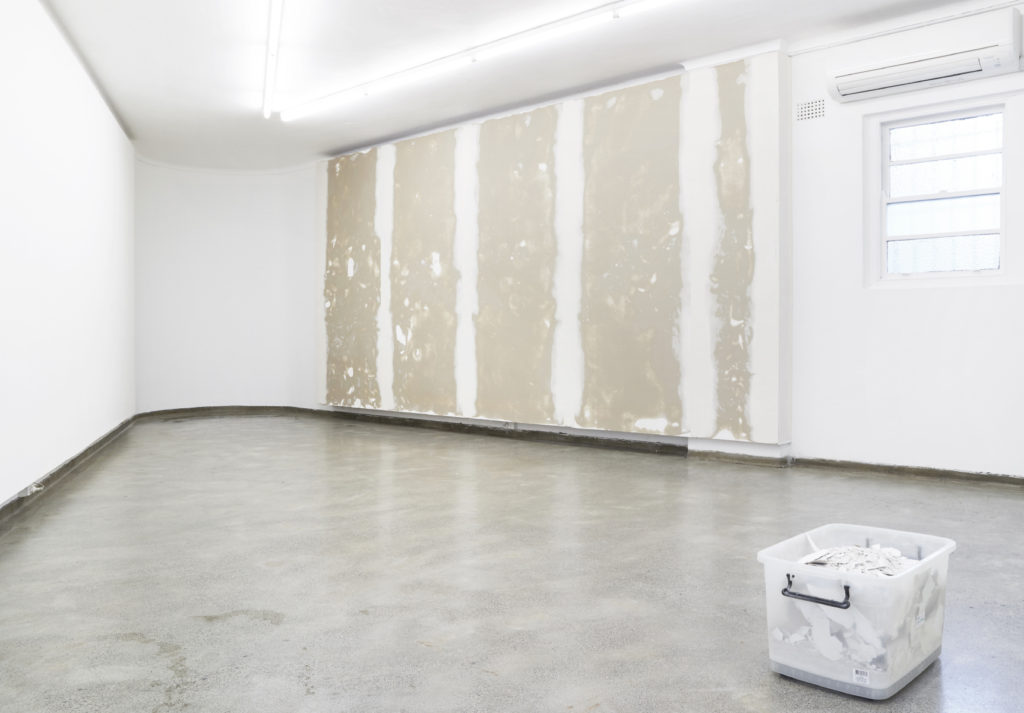
An institution that touches itself (2019)
Sanded wall and container of paint dust and peeled paint bits
Exhibited at Firstdraft, NSW
Photography: Zan Wimberley
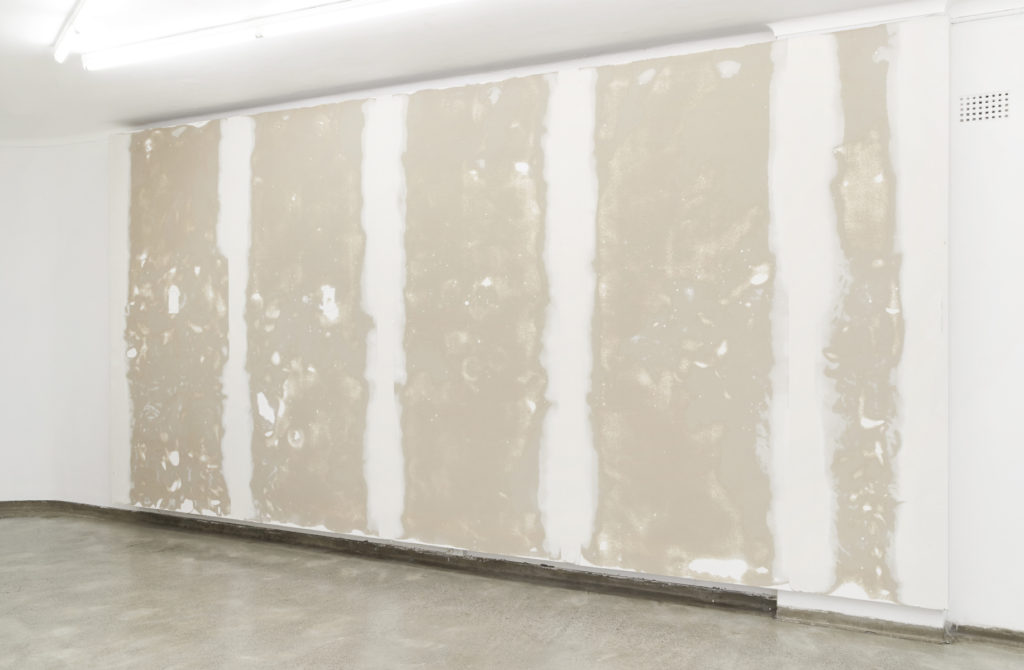
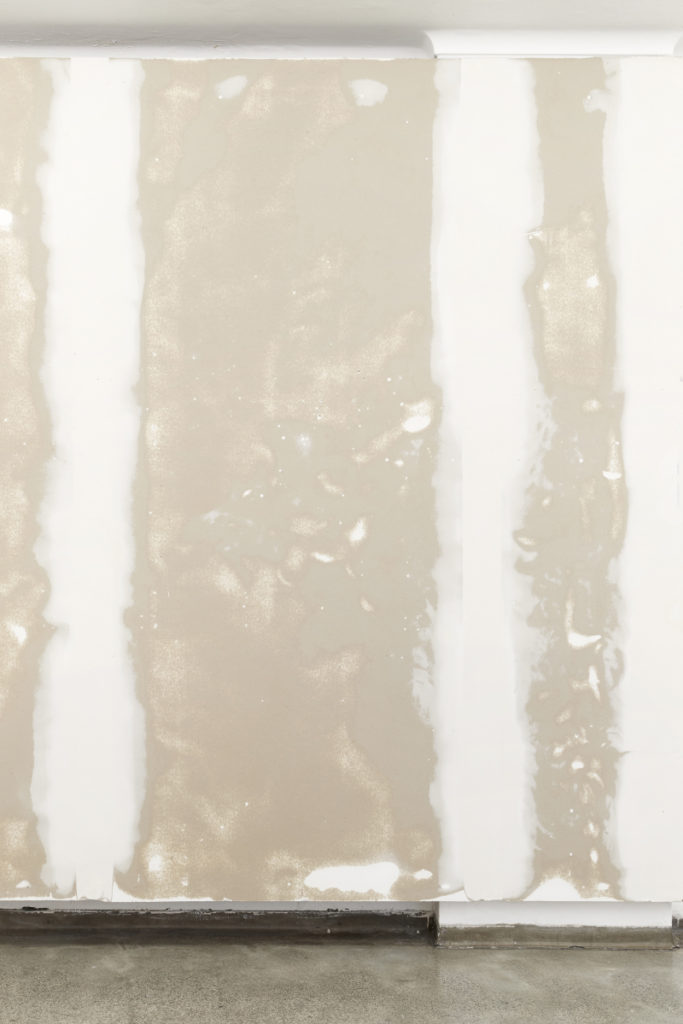
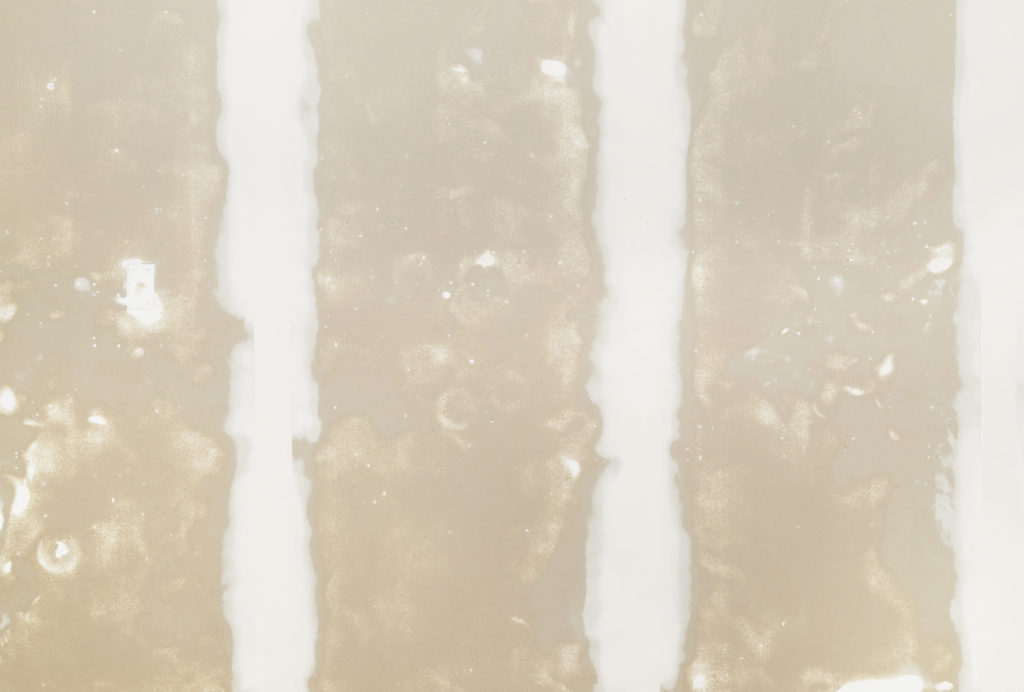
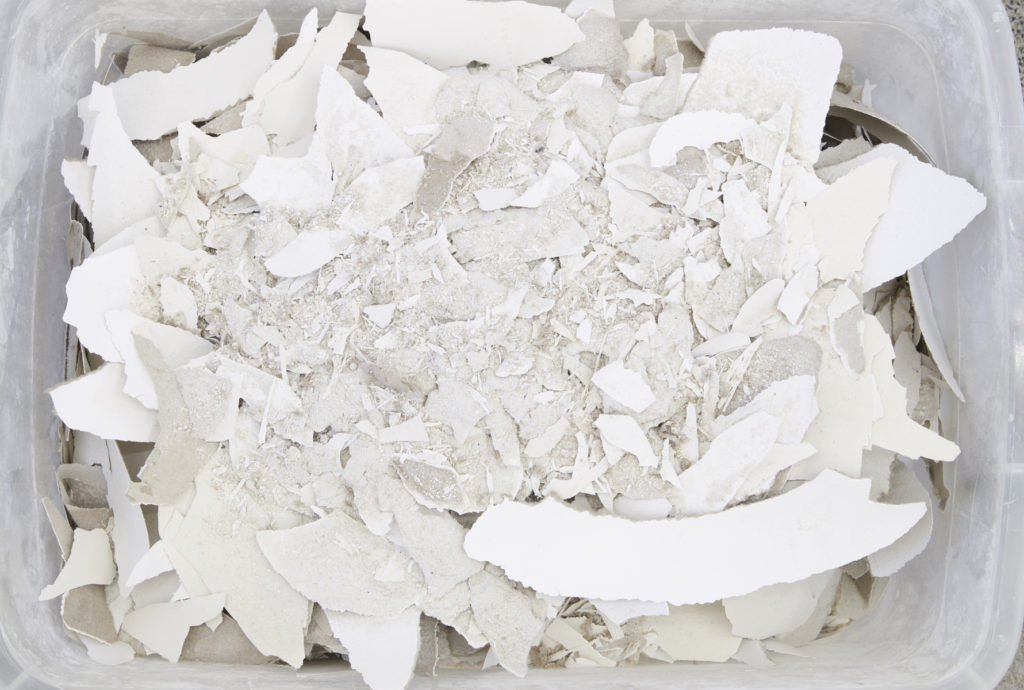
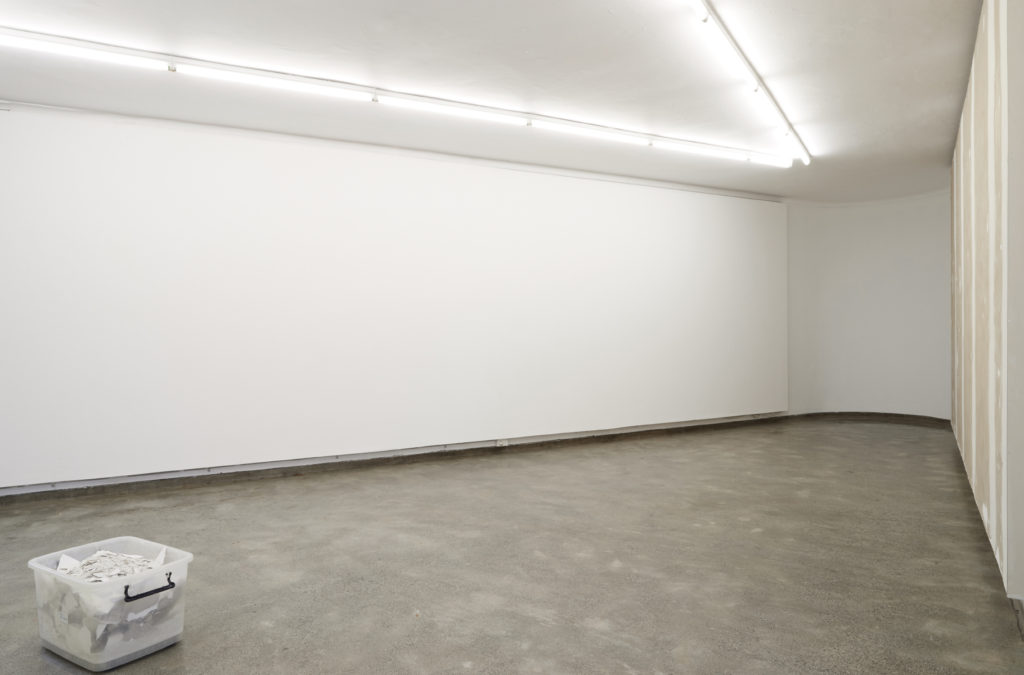
An institution that touches itself
accompanying text by Leen Rieth
The first time I made this work was late last year, in an artist-run space in a city where I used to live. At the beginning of the time assigned to me to install my artwork, I didn’t really know what I was going to make. I spent a number of days physically testing my relationship with the gallery. I measured the reach of my breath against the walls, and breathed on every part of all of them. I lay on the gallery floor, let its concrete coldness chill my body, and counted how many heartbeats it took until I couldn’t stand the cold any longer (63 beats). I sat inside the gallery, staring through the window, out into the goings on at the five-way traffic intersection. Half-way through day three, I decided to sand the paint off one of the walls. I chose the wall which was built by gallery staff. It shortened the length of the exhibition space by roughly four meters. It was a wall that was constructed for the purpose of exhibition on one side, and to create a concealed storage and work area on the other.
Earlier last year I undertook a few artist residencies overseas, including one that is part of a network of studio apartments for international artists in Paris. The living space in my apartment was set up like a gallery. It had one long, tall, very smooth white wall that I was allowed to make holes in, and the entire room was lit with track lighting. All eating, sleeping and writing, and making and exhibiting art happened in this one space. The handles of the toilet door in my apartment were the same as the handles of the toilet doors at the Pompidou. I noticed the handle by touch memory – the rounded tip of the handle pivoting under the middle folds of my fingers to swing it open and shut.
A year or so before that residency I moved into the postgrad studio at my current university. It is an open-plan, shared space that is fairly customisable. There are numerous moveable, stand-alone white wall panels which people use to create privacy. I got in early and made up a space for myself from walls abandoned by postgrads who had left. Setting up these studio walls felt like determining the direction of the work I was going to make. In my studio, I am transported to the gallery: my space for experimentation, for writing and for conversation has already been given its future exhibition. Within those walls I had already arrived.
Before all this, in the first year of my undergrad when I was struggling with an artwork, a teacher advised me to “try it in the space.” “The space” was a room with flat white walls, covered in scuff marks and full of holes left behind from previous students. These students had clearly not considered (or perhaps cared about) the next person using the space. I grabbed the gallery maintenance kit and patched up the walls. I wondered if there are gallery walls that have been drilled into and patched up so many times that they are made more of Spakfilla than they are made of plasterboard or plywood.
Yesterday, on the last day of installing at Firstdraft, I showed a volunteer how to use a paint roller to paint an even coat of white paint over sanded, putty-filled holes in the walls. When the volunteer washed the roller in the sink upstairs, the drain outside the building flooded, and paint water streamed out onto the road. There was no stormwater drain for it to disappear into. Instead it pooled against the gutter. The volunteer and one of the gallery staff mopped some of it up and the rest was left to evaporate.